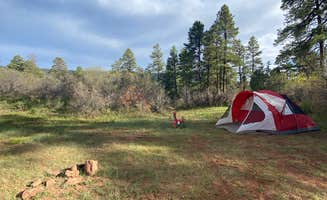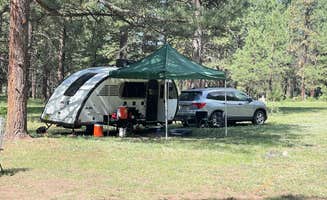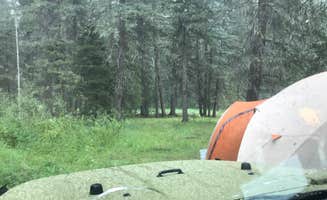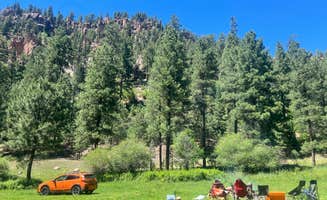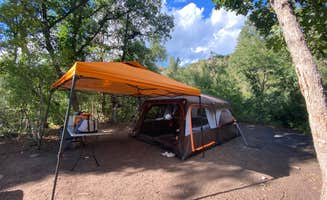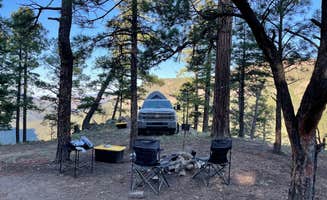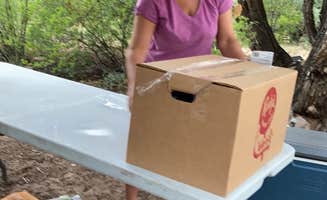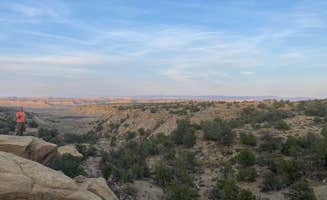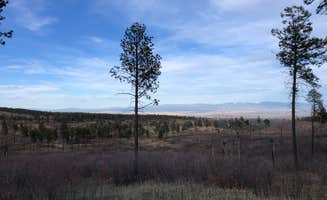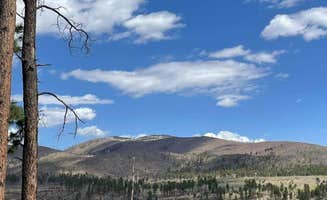Dispersed camping near Cuba, New Mexico offers remote sites throughout the Santa Fe National Forest at elevations ranging from 7,000-9,000 feet. The Cuba Ranger District manages numerous forest roads with informal campsites located along FR533, FR376, and FR144, creating opportunities for solitude with minimal development. Seasonal access varies dramatically, with many roads becoming impassable during winter months or after heavy rainfall.
What to do
Hiking accessible trails: Forest Road 533 provides access to hiking paths within minutes of primitive camping spots. "I was on a long road/camping trip and knew I needed to pull over to catch some sleep. This spot was about 20 minutes out of town and was perfect. There were about 4 pullouts off this forest road for camping, only two were occupied on Memorial Day weekend," reports one Forest Road 533 visitor.
Stargazing at higher elevations: The clear mountain air at Resumidero Camping Area creates exceptional night sky viewing conditions. A camper noted, "We expected a campground that was spread out, fire rings and vault toilets. It was perfect. The camp sites were far apart and you could chose between open meadows or in the trees. Hiking trails from the campground."
Wildlife observation: Early morning and evening hours offer prime opportunities to spot elk, deer and various bird species. "This area is in the Santa Fe National Forest and is managed by the Cuba, NM ranger district. It is widely disbursed with lots of shaded and sunny areas. It is fully primitive so come prepared," explains a visitor to Jemez Dispersed camping area.
What campers like
Secluded sites: The dispersed camping areas near Cuba feature significant separation between sites. At Road 378, Fenton Lake - Dispersed, "The clearings are far enough apart that you can make some noise without bothering the other campers. You need a bit of clearance to be able to drive the road but not much as my Crosstrek did it great. Even on July 4th this site wasn't busy."
Established fire rings: Many informal sites have rock fire rings already in place, though seasonal fire restrictions often apply. "There are sites all along the forest road with fire pits and pretty views," states a review for Forest Road 144.
Temperature variations: The high elevation camping areas provide natural air conditioning during summer months. "The road is a bit rough, but easy access and close enough to the lake that I drove over to kayak after setting up camp... Very quiet and peaceful. It does get cold at night since at approximately 8,000 elevation," mentions a Road 378 camper.
What you should know
Road conditions: Most forest roads require vehicles with decent clearance, especially after precipitation. A camper at FR376 Dispersed advised, "This is a very beautiful area, but boy is there a lot of traffic on this road. We hit this spot on a gorgeous-weather weekend, so I'm sure that's part of the reason it was packed and noisy (from OHVs, motorcycles, trucks, and music speakers)."
Cell service limitations: Connectivity is extremely limited or non-existent in most camping areas. "Zero cell service out here," reports a FR376 camper, while another mentions, "I have T-mobile and had signal depending on where I stood."
Seasonal closures: Forest roads may close without notice due to weather or management decisions. "After a long drive I found this site to be posted and closed. I'm a newbie so I could be incorrect but check USFS closures," warns a camper attempting to visit FR376.
Tips for camping with families
Choose established areas: For families with younger children, sites with basic infrastructure like Resumidero offer more comfortable primitive camping near Cuba. "We expected a campground that was spread out, fire rings and vault toilets. It was perfect."
Pack adequate clothing layers: Temperature drops at night can be substantial even in summer. As one Road 378 camper noted, "It does get cold at night since at approximately 8,000 elevation."
Bring sanitation supplies: With limited or no toilet facilities at most sites, families should prepare accordingly. "Completely natural. You and the outdoors. No electricity, water connections, sewer connections, wifi, cellular, etc.," mentions a Jemez Boondocking visitor.
Tips from RVers
Length restrictions: Most forest roads near Cuba have tight turns and narrow passages unsuitable for larger rigs. "Jemez is a popular camping destination. There are boon docking and campgrounds available. I do not recommend trying to bring a rig of any size through the Gilman tunnels. Best access for large rigs is taking 126 and accessing FS 376 from that route," advises an experienced RVer at Jemez Boondocking.
Water access planning: No hookups means carefully planning water usage. "This is an OHV area, so there's a trail that connects all the sites but I did not encounter anyone out riding. I found a decent site that had a nice fire pit. Zero cell service out here," notes a camper at FR376.
Road scouting: RVers should scout roads before committing to routes. "Not much in the area available for hook up rv sites. We decided to boondock here for the night with a generator for AC(traveling with dogs). The road in is steep for long rigs," reports a Cuba Highway Pulloff camper.


